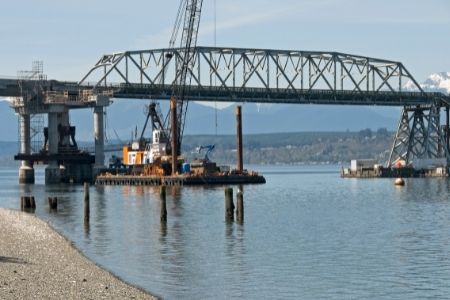Allisions are among the most serious and costly inland waterway accidents. When a river vessel strikes a structure like a bridge, the results can be devastating.
First, there is the potential for serious damage to the vessel and injuries among the crew. In addition, there is the possibility of serious injury or even death for any pedestrians or drivers who happened to be crossing the bridge at the time of the accident.

The damage done to the bridge itself could cost several million dollars and take several months to complete. This could be a big economic headache for people who use the bridge for business.
What’s the Difference between a Collison and an Allision?
Unfortunately, allision is a word more and more people are becoming familiar with. However, most people don’t know the difference between an allision and a collision. The two words have similar but distinct meanings when applied in the context of maritime law.
Both terms describe a boat striking something. A collision happens when two moving vessels strike each other. An “allision,” on the other hand, is a nautical term used to describe a vessel striking a stationary object such as a rock, bridge or dock.
What Causes Bridge Allisions?
A study by the United States Coast Guard and the American Waterways Operators revealed that the leading cause of bridge allisions on American waterways by far was human error. Piloting errors (errors made in the wheelhouse that affect the movement of the vessel) and operations errors (errors made by other than the pilot) accounted for 90% percent of the accidents. These errors included improper approaches, courses, speeds, turns and unattended helms. Mechanical failures (affecting navigation equipment or propulsion systems) accounted for only 5% of allisions.
The study also makes some recommendations to reduce the chances of bridge allisions:
The Oregon Rule and Bridge Allisions
Who is liable in bridge allisions? The law is pretty clear in this regard — the Oregon Rule applies in such cases.
The Oregon rule arose from an 1895 decision by the United States Supreme Court involving the steamship Oregon, which had struck an anchored vessel. The court found that when a moving vessel collides with a stationary object, the moving vessel is presumed to have been at fault. In such cases, the moving vessel has the burden of proving that the stationary object was actually responsible for the collision.
Have You Been Injured in a Bridge Allision Accident?
Are you a crewman who is unable to work due to injuries sustained during an allision with a bridge, dock or other stationary object? The Lambert Firm is here to help you get the full compensation you are owed for the pain, suffering, medical expenses and economic losses resulting from your injuries. We have been protecting the rights of workers on America’s inland waterways for over 40 years. Contact The Lambert Firm today to set up a free consultation with one of our experienced maritime injury attorneys to discuss your case.







